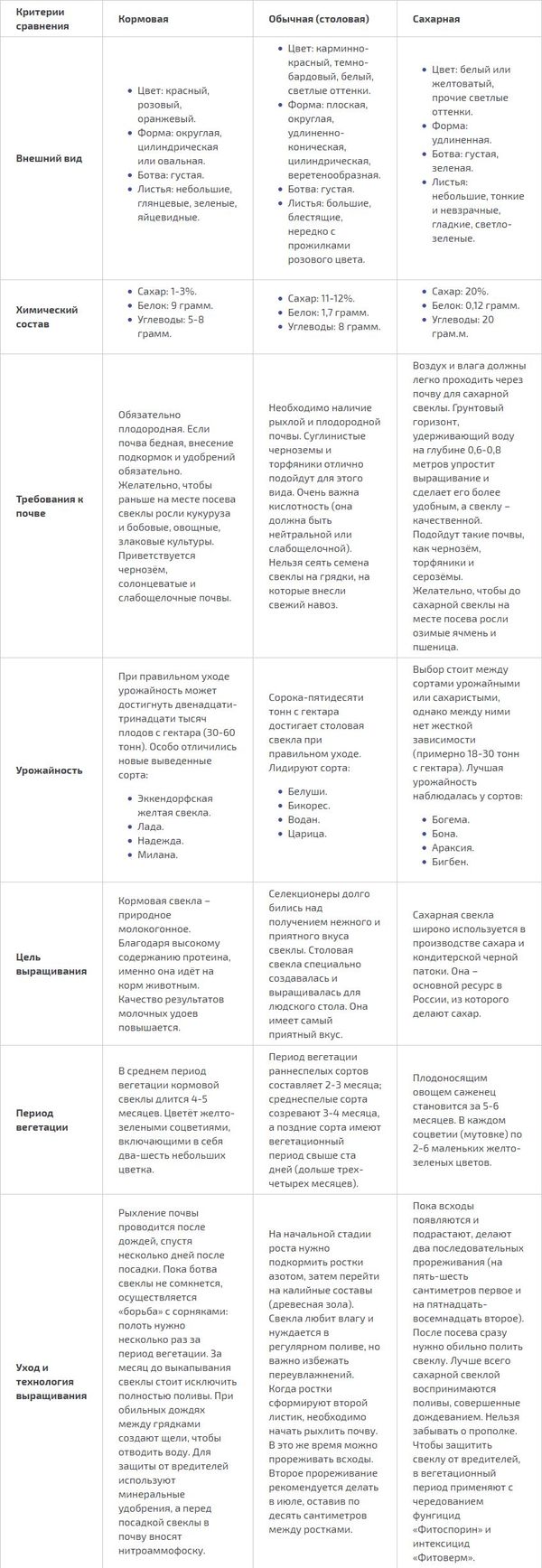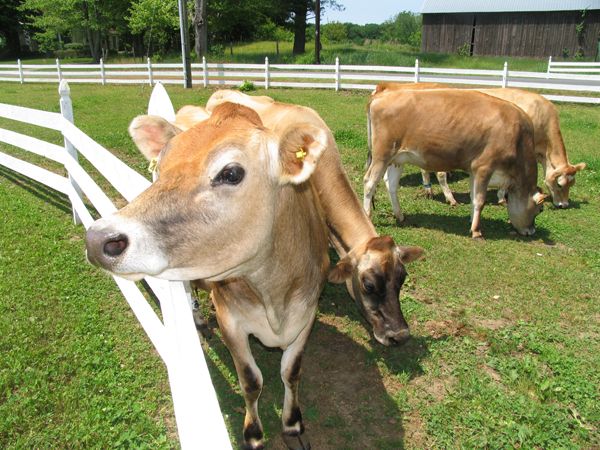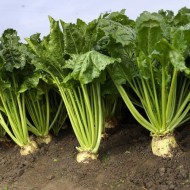What is the difference between sugar beet and fodder: description, photo and table
Content
Differences between sugar beet and fodder
Sugar beet has long been used for sugar production. Cattle are fed with fodder crops. Both species differ not only in appearance and scope, but also in the characteristics of their cultivation. The sugar vegetable grows narrow and long underground without showing up on the surface. And the stern can be seen a couple of centimeters above the soil. As for the roots, they also have a different degree of growth. The white plant takes root several meters deep into the ground in order to get moisture, and the roots of the orange plant do not sink lower than the root crop is located. Let's consider other differences according to different criteria.

Video "How to grow large beets"
In this video, an expert will tell you how to properly grow large beets.
Appearance
In terms of visual differences, a detailed description of each culture can be drawn up.
Stern:
- orange-scarlet color of the fruit;
- rounded shape;
- tops - more than 30 leaves on the outlet;
- the fruit is above the ground;
- oval leaves, marsh color, shine in the sun.
Sugar:
- dirty milky or gray tint;
- elongated shape;
- dense tops - more than 50 leaves on the outlet;
- the fruit is underground;
- leaves are elongated, smooth, have long petioles.
Even a person who is far from gardening can easily distinguish vegetables. Binds varieties only by the country of origin - India.
Chemical composition
The sugar variety has a dry residue of one fifth of the sugar. Why is a forage crop deprived of such a privilege? The fact is that it has much less fiber, and this affects the content of cells with sugar. Both varieties are rich in carbohydrates.
Throughout the existence of sugar beets, the percentage of sugar content has quadrupled. This fact had a positive effect not only on the increase in the volume of produced raw materials, but also on the expansion of the range of possibilities for using the processed product. This variety has practically no protein, but due to its high carbohydrate content, it has a special nutritional value. The animal feed product contains protein even in the leaves. It is also rich in fiber, minerals and vitamins. Therefore, vegetables are fed to livestock not only in warm weather, but also in winter.
Vegetative system
The forage species is ahead of its counterpart in terms of yield. And this is not surprising, because the growing season is shorter - up to 150 days. But the sweet culture matures up to 170 days. Saplings of this variety are thermophilic, but easily tolerate low temperatures. They are able to grow even at temperatures down to -10 ° C.
The feed variety is more thermophilic as it freezes at temperatures below -5 ° C. The vegetation systems of both species are practically the same. They bloom in small whorls on thick stems, each of which contains up to 7 yellow flowers. Several plants emerge from one intertwined root crop when planted. This is good in terms of yield, but difficult in terms of thinning.
To date, breeders have bred individual beet varieties, which are distinguished by an interesting sprout system. Their perianths do not curl with each other, which excludes the possibility of tangled glomeruli. This makes it much easier for gardeners to thin out the plant.
Requirements for growing conditions
The forage variety accepts fertile soil. If the soil is poor, be sure to fertilize it. The ideal option is to use the land on which legumes and cereals used to grow. You can plant on black soil, as well as soils with a low percentage of alkali and salt.
The earth is loosened a few days after planting. If it rains during this period, you need to wait a few more days until the soil dries out. Many gardeners are wondering up to what point a plant can be weeded. It turns out that only until the foliage closes. During the growing season, this procedure must be repeated several times.
A few weeks before digging up the fruit, it is necessary to completely abandon watering. If it rains during this period, thin out the soil between the beds so that the water flows there.
It is possible to save the culture from parasites with the help of mineral supplements.
The white variety loves moisture and air, so you need to make sure the variety is comfortable in the soil. To do this, you can make a soil horizon up to a meter deep. This will simplify the growing process and also increase the quality of the fruit. For planting a plant, you can choose black earth, peat or gray earth. The advantage will be the growth of winter crops on this land last year.
Until shoots appear, you can thin out the ground. The first thinning should be no deeper than 8 cm, and the subsequent ones can be increased to 17 cm. After sowing, it is important to provide the plant with moisture. It is good if it starts raining during this period. Don't forget that the culture needs to be weeded. Fungicidal and insecticidal preparations can be used to protect against parasites. You need to fight pests only during the growing season.
Scope of application of vegetable crops

Since the white variety belongs to industrial crops, its main purpose is to provide raw materials for production. The remains of the vegetable can be fed to livestock. Even the dirt that remains after processing the product is used as fertilizer.
The fodder variety is used for feeding horses, pigs and cows. Moreover, you can feed not only root crops, but also leaves. Scientists have determined that this vegetable is the most beneficial for its potassium, antioxidant, vitamin and mineral content. Due to this composition, the plant is considered useful, since it reduces pressure and improves the functioning of the gastrointestinal tract.
Both varieties of beets are actively used by humans, so the value of one or another variety cannot be denied. The advantage of this vegetable is not only the benefits, but also the non-waste production, since even processed residues can be fed to livestock.



